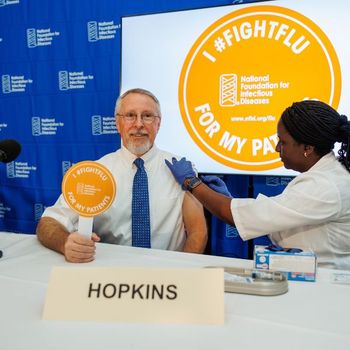
Hepatitis C More Prevalent Than HIV/AIDS or Ebola Yet Lacks Equal Attention
More than 180 million people in the world have hepatitis C, compared with the 34 million with HIV/AIDS and the roughly 30,000 who have had Ebola. Yet very little is heard about the hepatitis C virus (HCV) in the way of awareness campaigns, research funding or celebrity fundraisers.
One of the global regions highly affected by hepatitis C is West Africa. In developed countries, hepatitis C, a bloodborne disease, is transmitted through intravenous (IV) drug use. "In West Africa, we believe that there are many transmission modes and they are not through IV drug use, but through cultural and every day practices," says Jennifer Layden, MD, PhD, principal investigator on a study recently published in the journal Clinical Infectious Diseases. "In this study, tribal scarring, home birthing and traditional as opposed to hospital based circumcision procedures, were associated with hepatitis C infection in Ghana."
The study was conducted by HepNet, an international multidisciplinary group of physicians and scientists. "The other important finding was that a high percentage of individuals who tested positive for HCV had evidence of active infection," says Layden. "This illustrates the need for treatment."
Discovering the source of the disease and a target population, she says, will aid in the next step of the research: how to protect and prevent the disease in Ghana.
Layden and colleagues from Loyola's Department of Public Health Sciences organized the inaugural HepNet meeting Aug. 12-13, 2013, in Kumasi, Ghana. Loyola University is the lead investigator in the HepNet research, with collaboration from the Komfo Anokye Teaching Hospital in Ghana, the Centers for Disease Control and the Johns Hopkins University. This is the first published research study from the HepNet group.
"This is a small study conducted at a blood bank in a teaching hospital in Ghana," says Layden. "We have now expanded studies to test more than 5,000 individuals in Ghana." The goal is to further understand whom is affected by hepatitis C and to identify specific next steps in intervention and prevention.
"Hep C is a chronic disease and leads to chronic liver disease, liver cancer and cirrhosis," says Layden. "Overall, worldwide rates of liver cancer is on the rise, whereas many other cancers are on the decline or steady." Layden says the study offers hope for West Africa.
Similar studies have been conducted in Egypt, a country with high rates of hepatitis C infection.
"Those studies helped to call attention to the widespread infection rate and resulted in getting infected Egyptians affordable medical treatment," says Layden. "We in HepNet hope our studies will do the same in Ghana and other West African countries."
Participating researchers from Loyola University Chicago, Stritch School of Medicine are: Jennifer Layden; Stephanie Kliethermes; Nallely Mora; Lara Dugas; Amy Luke; David Shoham and Richard S. Cooper.
Source: Loyola University Health System
Newsletter
Stay prepared and protected with Infection Control Today's newsletter, delivering essential updates, best practices, and expert insights for infection preventionists.






